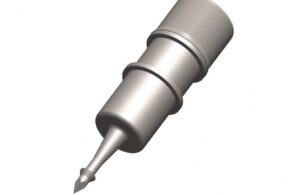
The approval allows for one administration per eye of iDose TR (travoprost intracameral implant) 75 mcg. The indication for the prostaglandin analog covers the reduction of intraocular pressure (IOP) in patients with ocular hypertension (OHT) or open-angle glaucoma (OAG).
iDose TR is a first-of-its-kind, long-duration, intracameral procedural pharmaceutical therapy. It continuously delivers 24/7 therapeutic levels of a proprietary formulation of travoprost inside the eye for extended periods. Glaukos designed iDose TR to improve the standard of care by addressing patient non-compliance issues. The implant also addresses the chronic side effects associated with topical glaucoma medications.
Glaukos Chair and CEO Thomas Burns called the approval “a significant milestone” in a news release. He said the road to approval began with the original idea nearly 15 years ago. The approval “ushers in a new era” of glaucoma therapy, the CEO said.
The company plans to begin initial commercial launch activities in the latter part of the first quarter of 2024. It established a wholesale acquisition cost for iDose TR, set at $13,950 per dose (or implant).
“We believe iDose TR can be a transformative, novel technology able to fundamentally improve the treatment paradigm for patients with open-angle glaucoma or ocular hypertension,” Burns said. “We are grateful to the clinical investigators and study participants in the clinical trials for their instrumental roles in helping us reach this important advancement for glaucoma patient care. At Glaukos, we are relentlessly focused on delivering novel therapies for chronic eye diseases, and now iDose TR has the potential to redefine the standard of care for patients in the U.S. affected by open-angle glaucoma and ocular hypertension.”
More about how the Glaukos iDose TR implant won FDA approval and the analysts’ view
Approval came on the back of results from two Phase 3 pivotal trials comparing the safety and efficacy of iDose TR models. In total, those trials randomized 1,150 subjects across 89 clinical sites.
Both trials achieved pre-specified primary efficacy endpoints through three months. They demonstrated a favorable tolerability and safety profile through 12 months as well.
Within that data, Glaukos said 81% of slow-release iDose TR subjects were free of the topical medications at 12 months. iDose TR also produced no adverse events of corneal endothelial cell loss, no serious corneal adverse events. There were no adverse events of periorbital fat atrophy.
In addition to the approval, Glaukos introduced the “iDose Your Dose Initiative.” For each iDose TR sold, the company plans to make available an equal number of units for qualifying charitable donation requests. The initiative spans the U.S. and the rest of the world for recipients that satisfy independent eligibility requirements.
BTIG analysts Ryan Zimmerman and Iseult McMahon have a “Buy” rating for Glaukos. They say the approval comes with a generally broad label. However, they note that, while it features no limitation on duration, the indication states that iDose TR should not be readministered.
As a result, Glaukos management told the analysts that they purposely priced the implant higher to compensate for the longer duration.
“While [Glaukos] cannot market the unit for readministration, it is not a result of any ECL concerns but rather the FDA’s conservatism on readministration of any intracameral implant,” they wrote. “This language is far less restrictive in our view than Durysta’s label and provides for physician discretion.”
Zimmerman and McMahon went on to write that they “feel good about the results.”
“The label wasn’t perfect as some had hoped, but it wasn’t all that bad either,” they wrote. “The FDA took a conservative view on readministration and limited iDose on this specific issue. [Management] believes that they can get a readministration change without the need for additional data.”

